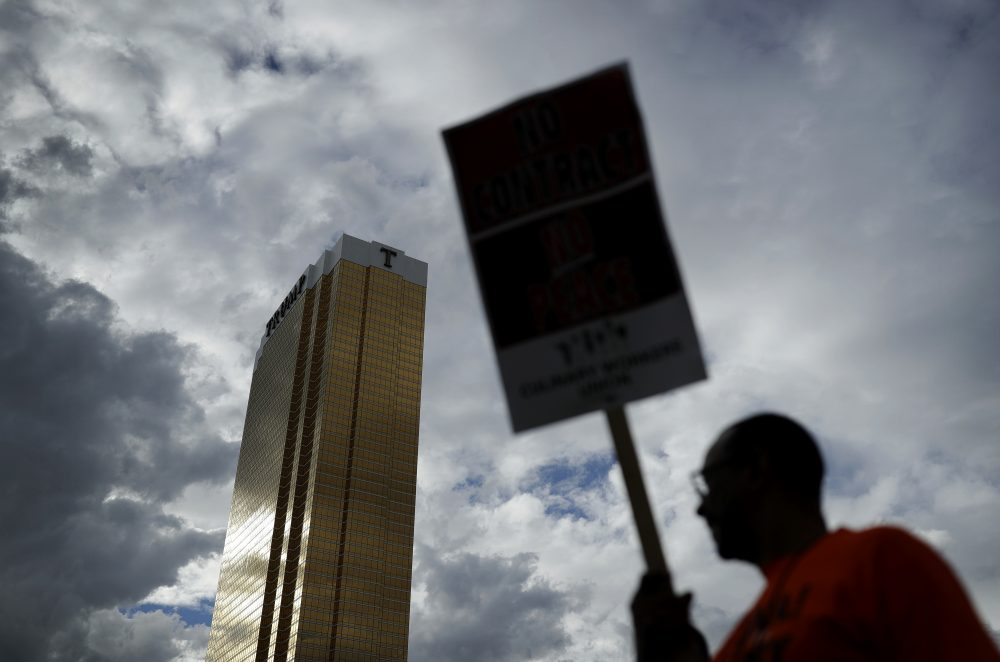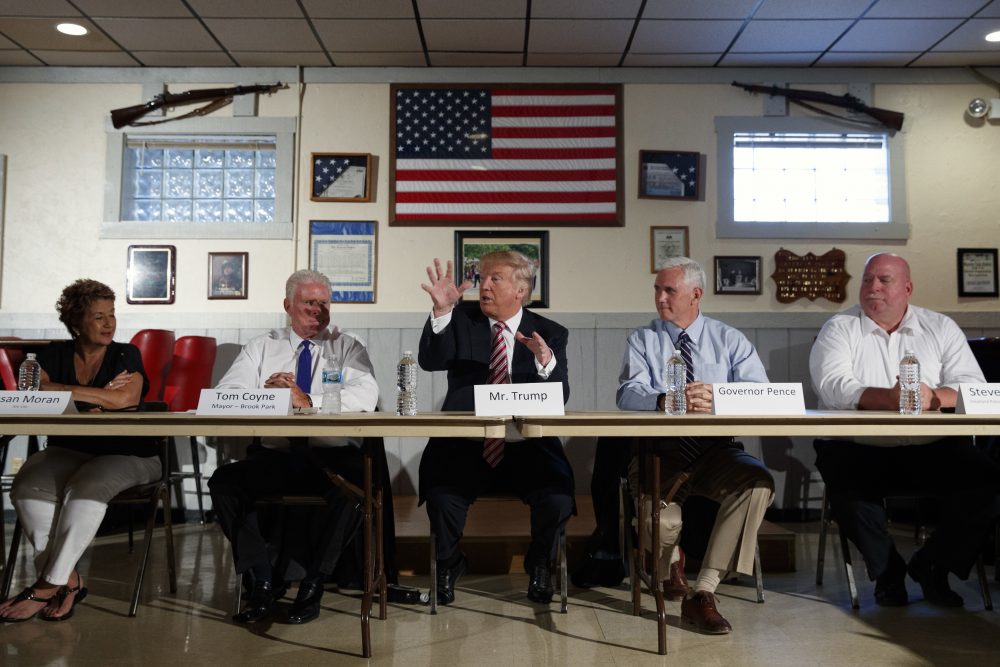Advertisement
Commentary
Trickle-Down Economics, And The State Of The Unions

On this first Labor Day under the Trump regime, workers could be forgiven for firing up their holiday barbecues without much gusto.
Sure, unemployment is low. But that fact masks unpleasant realities. The percentage of employed workers 25 to 54 years old hovers below the level we saw on the eve of the Great Recession. For many Americans, real wages haven’t budged significantly for decades.
Meanwhile, our president’s promised infrastructure jobs bonanza remains missing in action. Instead, he and congressional Republicans fixate on tax cuts for the rich -- disproven as a foolproof way to help the lunch-bucket set — and on slashing social spending. Thoughtfully reforming anti-poverty programs is one thing; gutting them is another and will hurt down-and-out Americans.
So this upcoming holiday celebrating labor focuses the mind on how we actually might help labor. That starts with reviving unions, the decline of which turns out to be even more responsible for our inequality than you think.
Union membership has tanked from a third of the workforce in the 1960s to just 7 percent today, a long-recognized factor behind inequality. But progressives also argue that steady inequality has marched hand-in-hand with the nation’s supposedly steady embrace of trickle-down economics — tax and spending cuts along the lines Trump wants — since Ronald Reagan lived at 1600 Pennsylvania Avenue.
Blocking Trump’s economic agenda is surely important. Yet liberal economist Paul Krugman argues that Reaganomics’ sway has been overstated: While inequality has been constant for decades, a let-them-eat-cake policy for the poor has not.
Krugman graphed the average tax rate on the wealthiest 1 percent since the Gipper was president. While Reagan and George W. Bush did indeed cut those taxes, Bill Clinton and Barack Obama raised them, so that near the end of Clinton’s term, and again today, they stood and stand at roughly the level Reagan found when he took office.
And while some anti-poverty programs were starved during that nearly 40-year time period, others grew. In particular, Medicaid, after its Obamacare expansion, today covers more than 20 percent of non-elderly Americans. It reached less than half that percentage in 1980, Krugman reports. His conclusion: “A welfare state supported by progressive taxation has been much more robust than the year-by-year political narrative might lead you to think.”
That means the withering of unions (and financial deregulation that brought on the Great Recession, Krugman adds) are the likeliest culprits behind our stubborn inequality. Even some conservatives have realized that reversing the slide in labor organizing would benefit the nation.

That slide resulted from deliberate policy and is reversible. (Whether it’s politically feasible without electing pro-union politicians or curbing the donor class’s influence over our politics is another matter.) We could align federal law with Canada’s, which makes forming a union easier, nails employers who illegally block unions, and is more hair-trigger about imposing arbitration if contract talks between management and labor deadlock. Nations with robust unions, like Canada, have less inequality than we do.
Of course, Donald Trump is hardly a look-for-the-union-label type. But what if unions could help the White House on another pro-labor initiative that is supported by the president who starred in "The Apprentice": a national apprenticeship system?
In June, Trump signed an executive order doubling federal spending on apprenticeships. It’s unclear if the money will be enough, but the concept is spot-on, says the Third Way, a centrist think tank. It touts existing, well-designed apprenticeship programs to ensure that job training matches the skills employers need.
I wonder it the president knows that unions are playing key roles in some of these efforts? For example, Third Way cites electrical industry apprenticeships designed by a partnership between contractors and the International Brotherhood of Electrical Workers.
Maybe his economic advisers could prevail upon Trump to see unions as a partner in creating the apprenticeships he’s talked up. Or maybe a man who prides himself as a dealmaker could trade union-friendly laws for labor’s help in setting up apprenticeships.
Oh, and how about that infrastructure plan, Mr. President?
